Exploring the Beauty and Significance of Xhosa Traditional Attire
Exploring the Beauty and Significance of Xhosa Traditional Attire
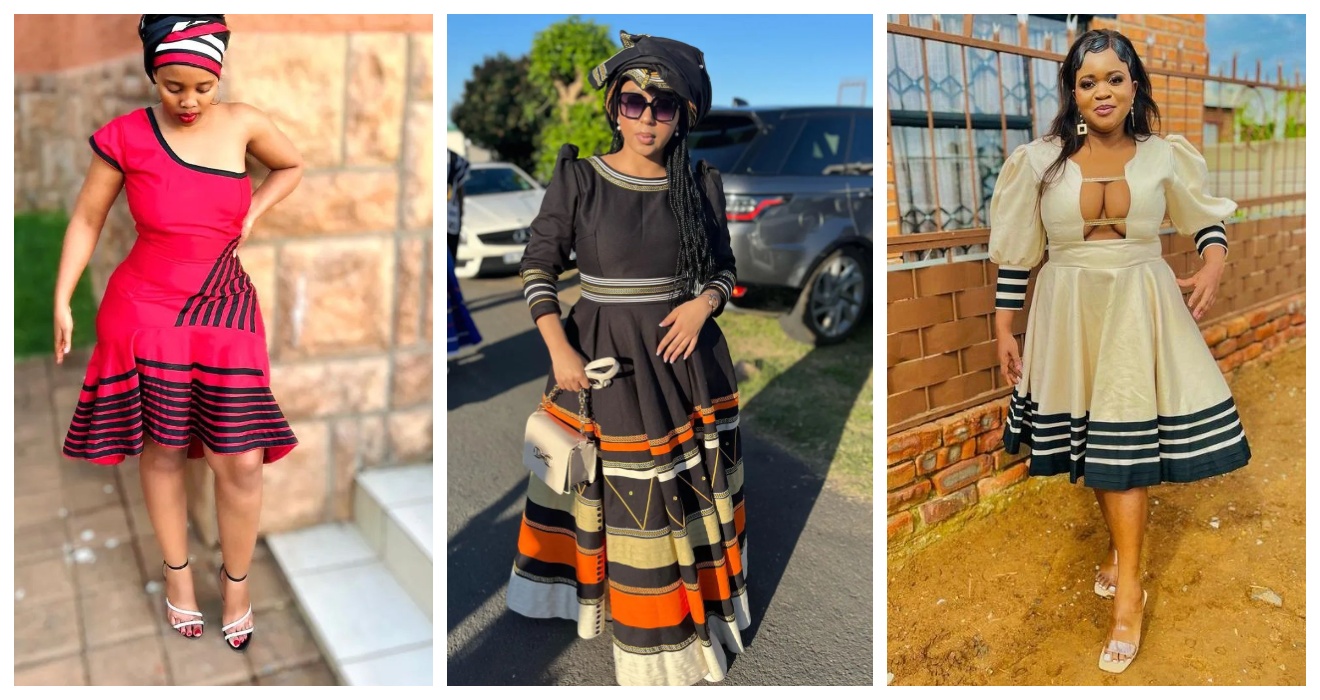
Introduction
Xhosa traditional attire is not only visually stunning but also holds deep cultural significance. This article will explore the beauty and significance of Xhosa traditional attire, shedding light on its historical roots, unique designs, and the important role it plays in Xhosa culture.
Overview of Xhosa Traditional Attire and its cultural significance
Xhosa traditional attire reflects the rich heritage and customs of the Xhosa people, who are an ethnic group native to South Africa. The attire is characterized by vibrant colors, intricate patterns, and a variety of textures. It is often made from traditional fabrics such as isiXhosa or shweshwe.
Traditional Xhosa outfits include the iconic women’s clothing known as “isicholo” or “umuqhele,” which consists of a headdress adorned with beads and feathers, and the “ixhiba,” a beautifully woven skirt made from materials such as wool or cotton. Men typically wear a “makoti,” a long-sleeved shirt, paired with “imbola,” a long cloth wrapped around the waist.
The significance of Xhosa traditional attire goes beyond its aesthetic appeal. It serves as a source of cultural identity, symbolizing the values, customs, and history of the Xhosa people. Wearing traditional attire is a way for individuals to connect with their heritage and display their pride in their roots.
Additionally, Xhosa traditional attire plays a prominent role in important cultural ceremonies and celebrations. It is commonly worn during initiation ceremonies, weddings, and other festive occasions. The attire serves as a visual representation of cultural unity and serves as a reminder of the importance of preserving traditions for future generations.
Overall, Xhosa traditional attire is more than just clothing; it is a powerful expression of cultural heritage and an integral part of the Xhosa identity.
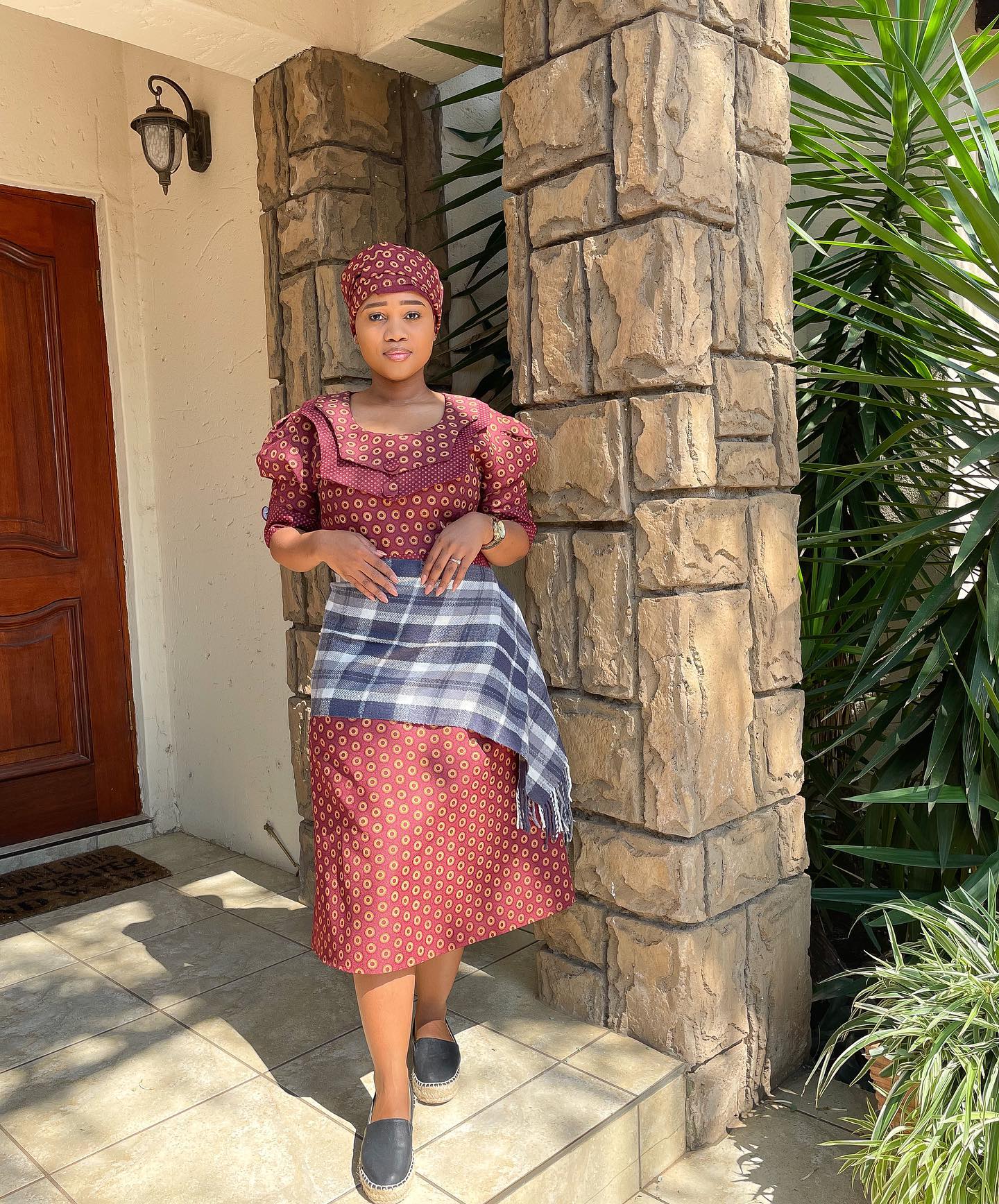
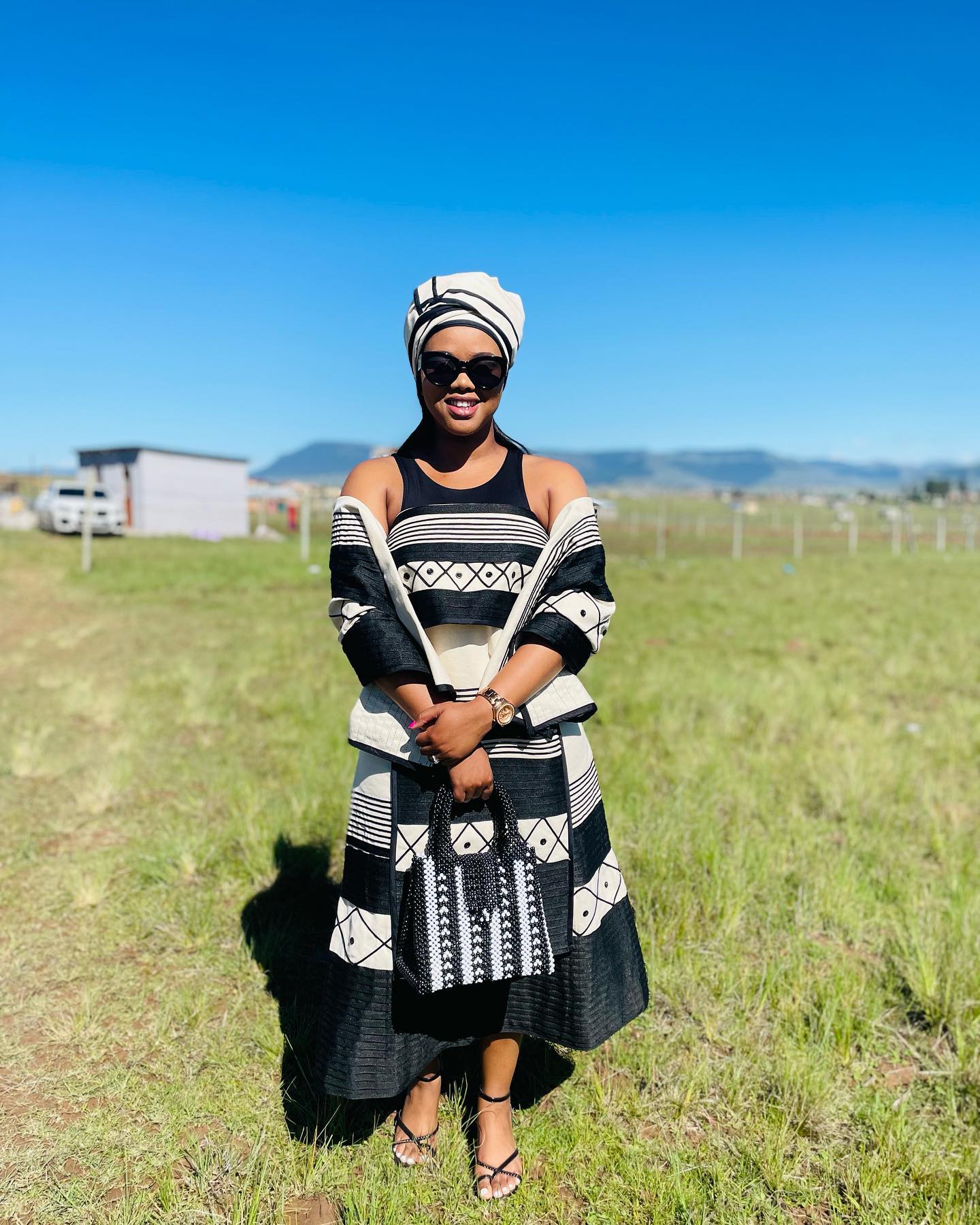
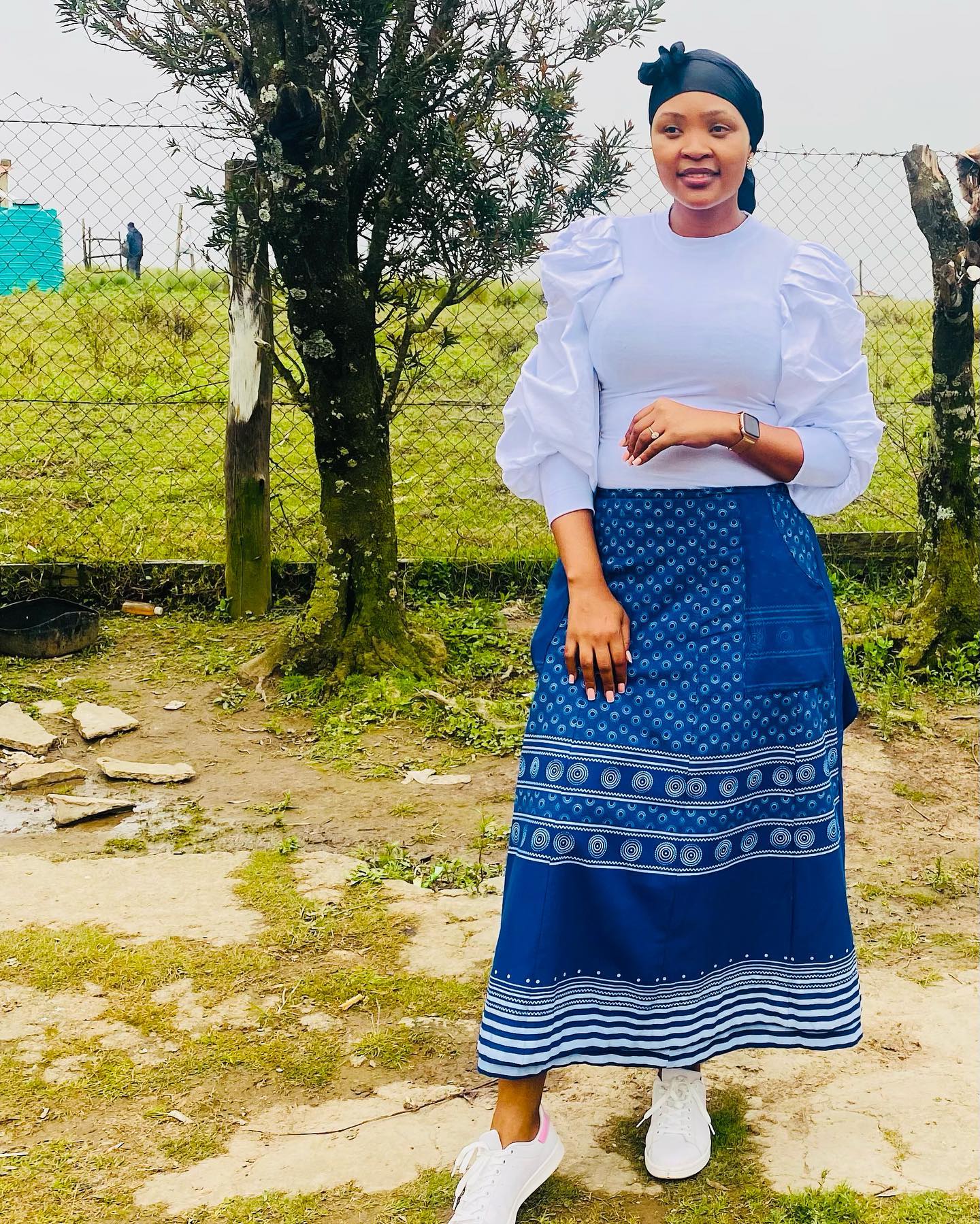
History of Xhosa Traditional Attire
The Xhosa people of South Africa have a rich and vibrant cultural heritage, which is beautifully expressed through their traditional attire. From the intricate beadwork to the bold and colorful prints, Xhosa clothing is a visual representation of their identity and heritage.
Evolution and development of Xhosa clothing
Xhosa traditional attire has evolved over time, influenced by a variety of factors such as historical events, contact with other cultures, and modern fashion trends. The clothes are often made from locally sourced materials like cotton or wool, and the designs are passed down through generations, each with its own meaning and symbolism.
Today, Xhosa clothing is not limited to special occasions or ceremonies; it has become a fashion statement for many. The popularity of Xhosa traditional attire has grown exponentially in recent years, with designers incorporating modern styles and trends into their creations.
Wearing Xhosa attire is not only a way for individuals to connect with their cultural roots but also a form of self-expression and pride. It is a celebration of the past, present, and future of the Xhosa people.
From weddings to festivals, Xhosa traditional attire adds a touch of elegance and authenticity to any occasion. Its beauty lies not only in the intricate patterns and vibrant colors but also in the stories it tells and the connections it fosters among individuals.
So next time you see someone proudly wearing Xhosa traditional attire, take a moment to appreciate the beauty and significance behind their choice. It’s more than just clothing; it’s a testament to the rich cultural heritage of the Xhosa people.
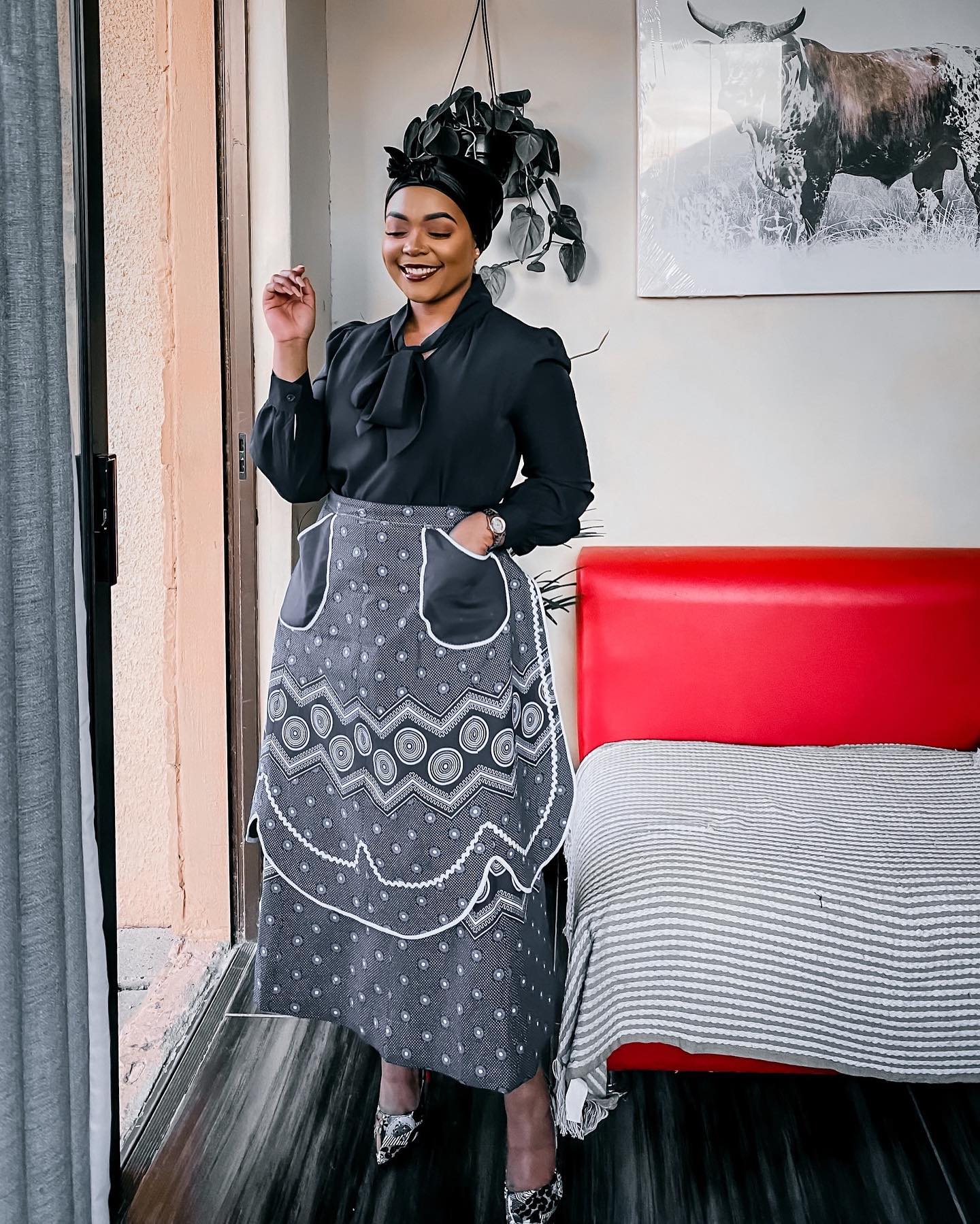
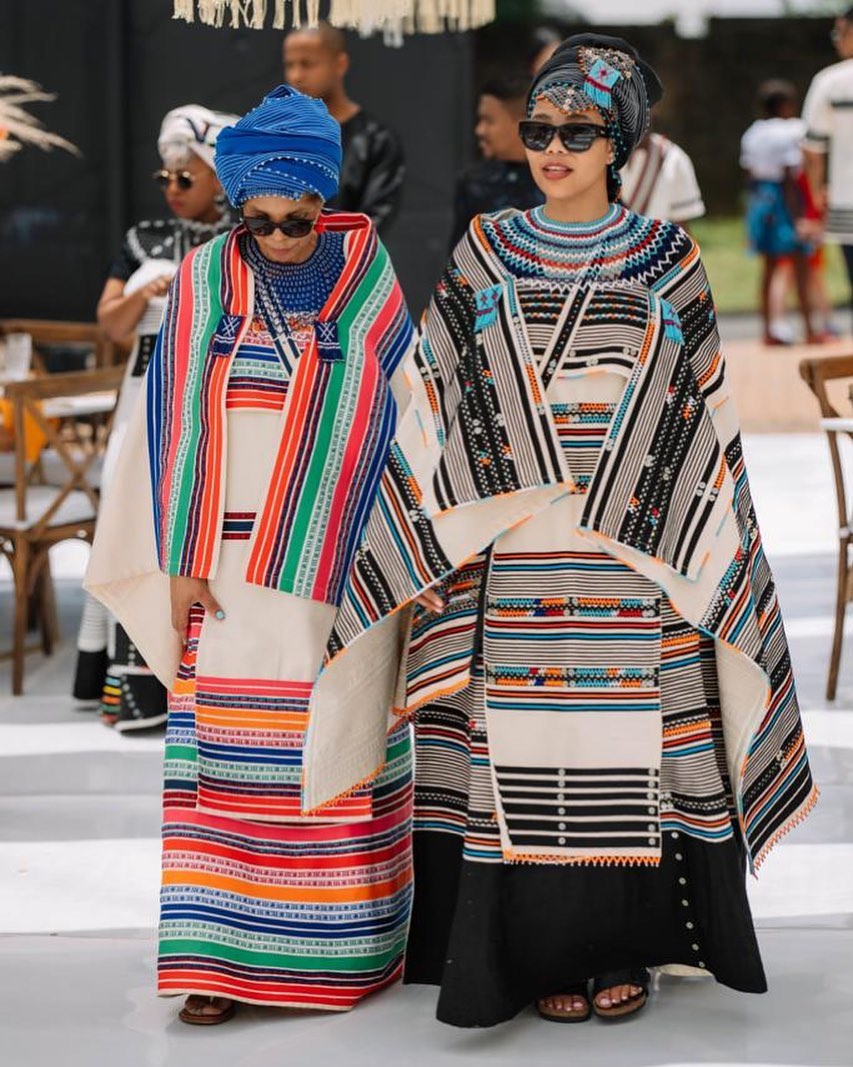
Components of Xhosa Traditional Attire
Xhosa traditional attire is not just clothing; it’s a symbol of the rich cultural heritage and identity of the Xhosa people. Understanding its components allows for a better appreciation of its beauty and significance.
Explanation of different elements such as isidwaba, isicwaya, and ibheshu
- Isidwaba: Isidwaba is a Xhosa traditional skirt made from fabric that wraps around the waist and reaches the ankles. It is beautifully adorned with vibrant colors and patterns, representing cultural pride and individual style.
- Isicwaya: Isicwaya refers to the top or blouse worn with the isidwaba. It is usually made from a matching fabric and designed with intricate beadwork or embroidery, showcasing the craftsmanship and attention to detail in Xhosa fashion.
- Ibheshu: Ibheshu, also known as a waist apron, is another essential component of Xhosa traditional attire. It is worn around the waist and made from animal skin or fabric. Ibheshu adds an element of elegance to the overall outfit while symbolizing cultural heritage.
These elements, combined with accessories like beaded necklaces, bracelets, and headpieces, create a complete Xhosa traditional attire ensemble. Each item tells a story and represents the values, traditions, and pride of the Xhosa people.
Exploring the beauty and significance of Xhosa traditional attire allows us to appreciate the diversity of cultures worldwide and promotes cultural preservation and understanding.
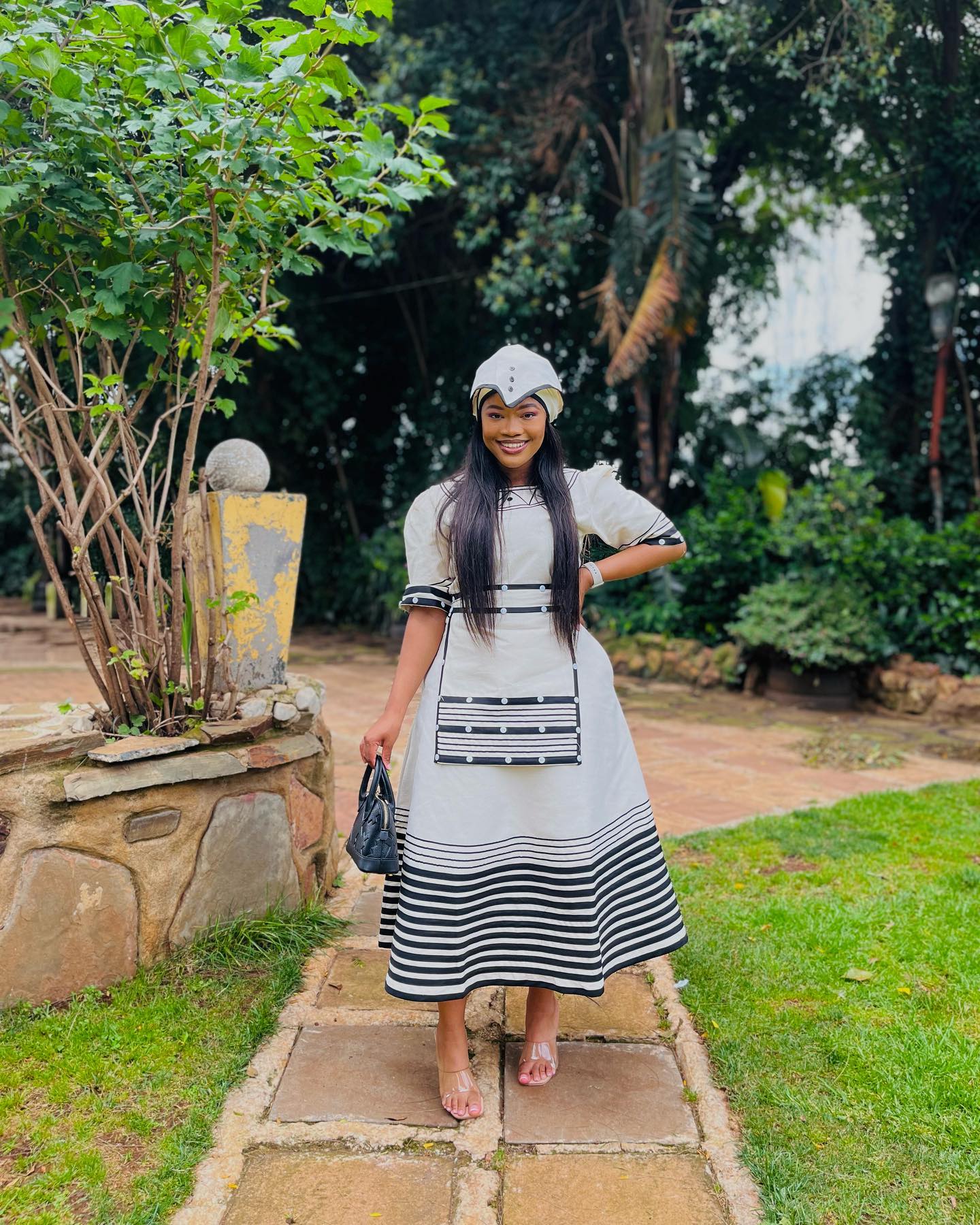
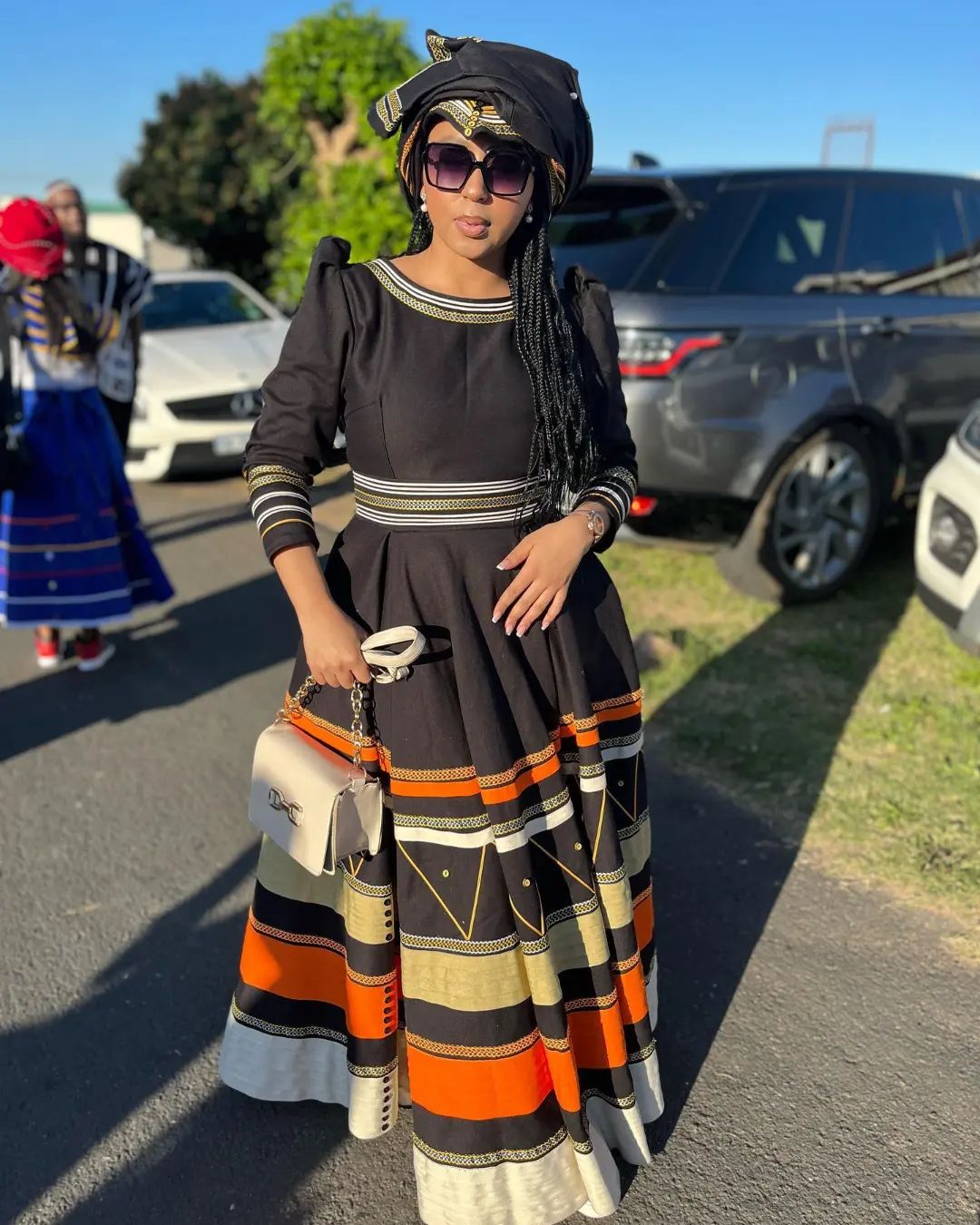
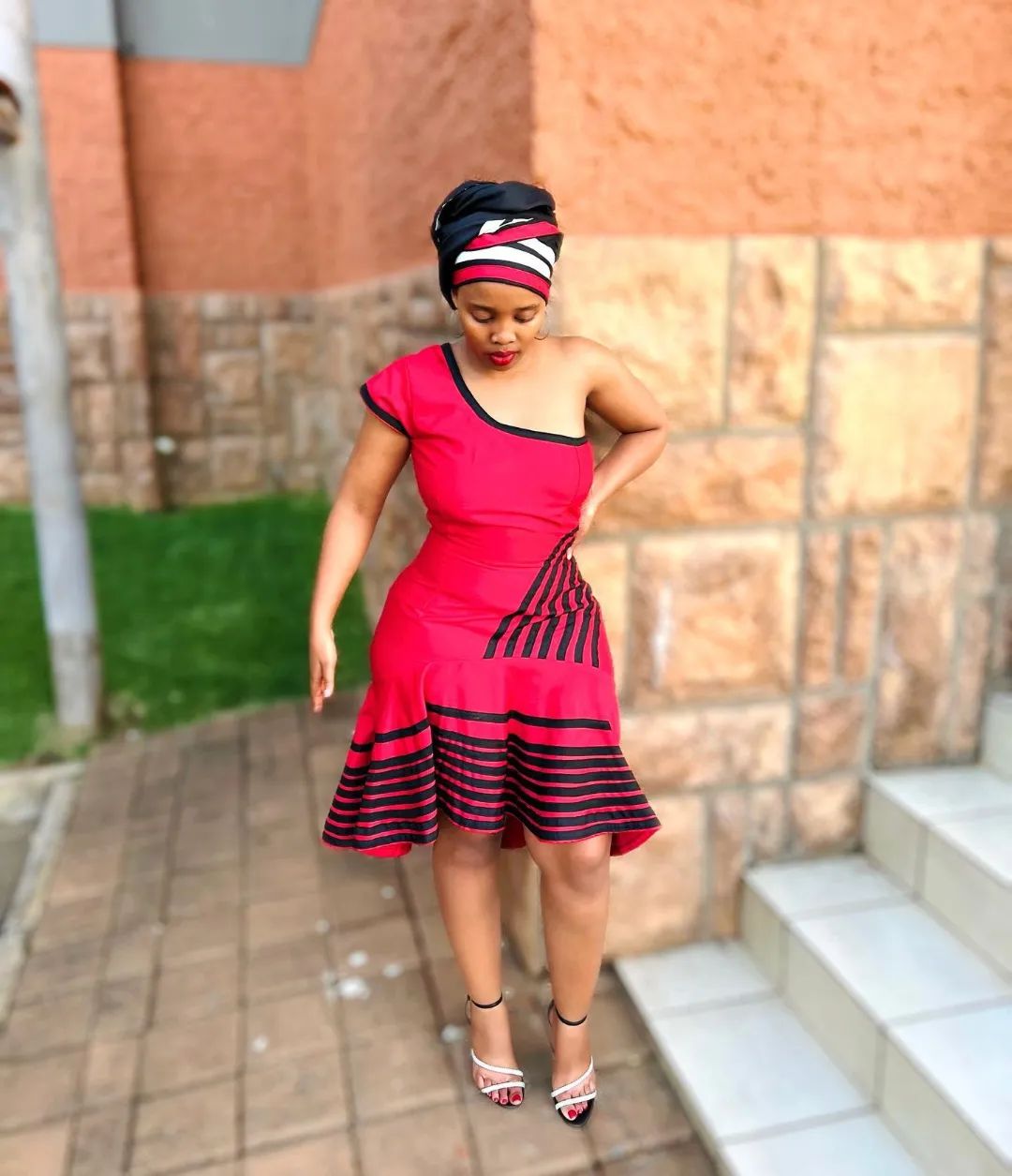
Colors and Patterns in Xhosa Traditional Attire
The Xhosa traditional attire is known for its vibrant colors and intricate patterns that hold deep cultural significance. Each color and pattern tells a story and carries symbolic meaning. From the bold reds and blues to the earthy tones, these colors represent different emotions, values, and stages of life. The patterns, on the other hand, reflect the rich heritage and traditions of the Xhosa people. They showcase intricate beadwork, embroidery, and weaving techniques that have been passed down through generations.
Meaning behind the vibrant colors and intricate patterns used
- Red: Red symbolizes love, passion, and power. It is often worn by brides during traditional Xhosa weddings to signify their readiness for marriage and their role as the heart of the family.
- Blue: Blue represents spirituality, peace, and harmony. It is associated with the ocean, which holds great significance in Xhosa culture as a source of life and spiritual renewal.
- Green: Green represents growth, fertility, and abundance. It symbolizes the lush landscapes of the Eastern Cape province where the Xhosa people predominantly reside.
- Yellow: Yellow is associated with joy, happiness, and celebration. It is often worn during traditional ceremonies and festivals to honor important milestones in life.
The intricate patterns found in Xhosa traditional attire tell stories of clan relationships, ancestral connections, and personal identity. These patterns are meticulously crafted using beadwork, embroidery, or weaving techniques that require skill and creativity. Each pattern has its own meaning within the larger context of Xhosa culture.
Exploring the beauty and significance of Xhosa traditional attire allows us to appreciate the rich heritage and cultural identity of the Xhosa people. It is a testament to their craftsmanship, creativity, and deep connection to their
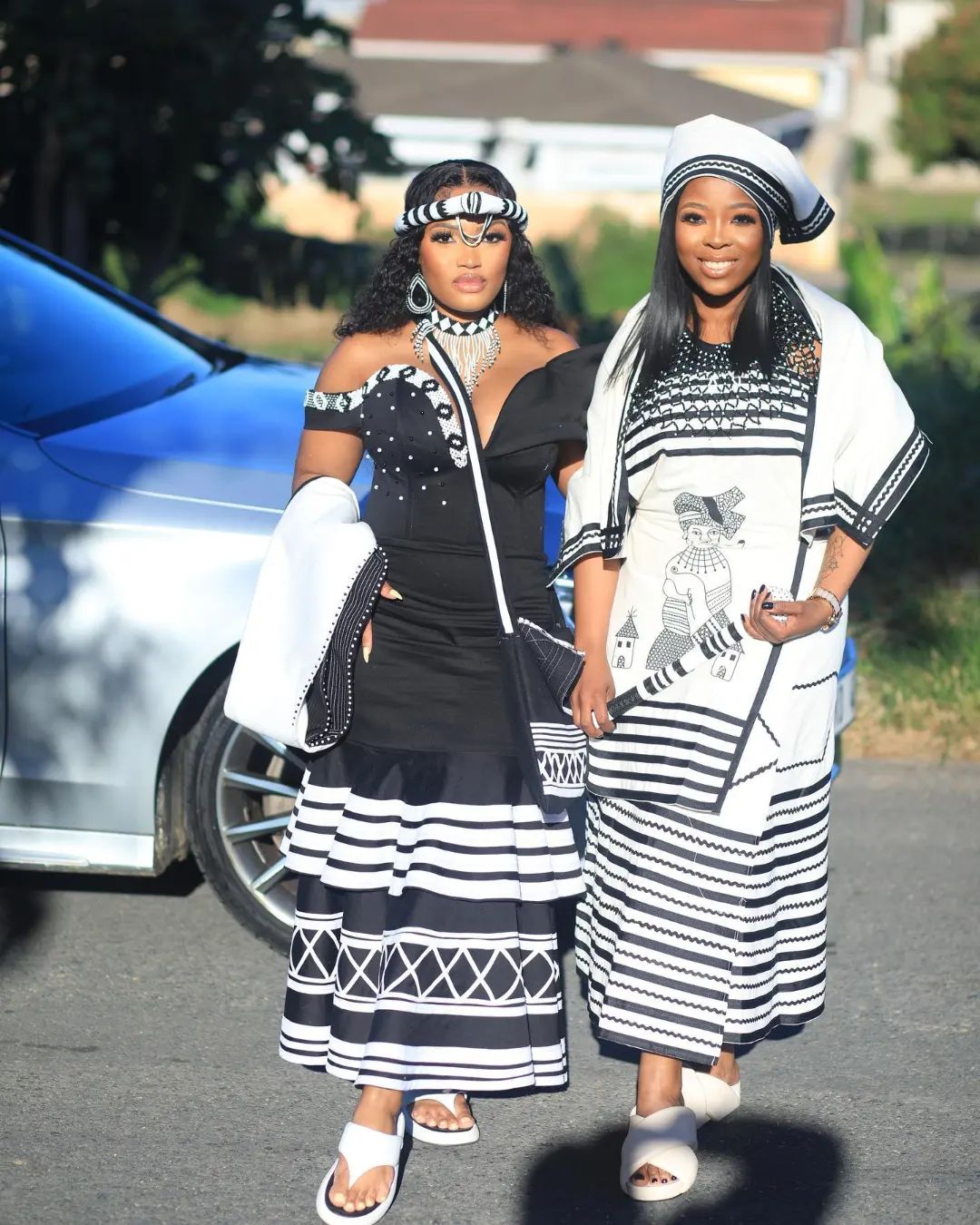
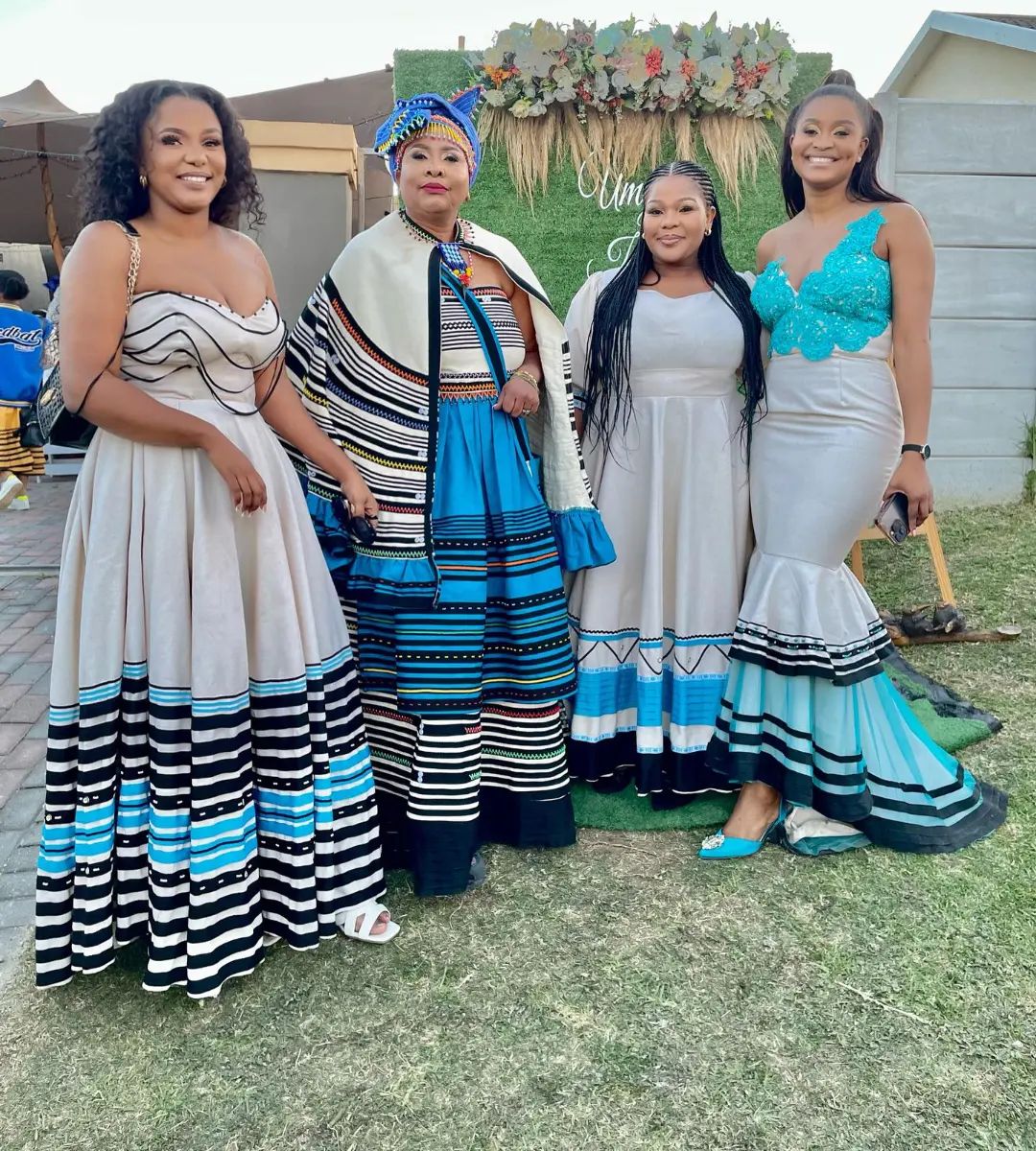
Xhosa Traditional Attire for Men
The Xhosa people, a proudly cultural group in South Africa, have a rich heritage that includes vibrant and distinctive traditional attire. Traditional clothing not only holds aesthetic significance but also plays an important role in preserving cultural identity and heritage.
Description of traditional clothing items for men, such as the umqhele and inxeba
Umqhele: One of the most iconic pieces of Xhosa traditional attire for men is the umqhele. This is a headdress made from cowhide or other materials, beautifully decorated with colorful beads. The umqhele symbolizes masculinity and is a symbol of authority and leadership.
Inxeba: Another essential item in Xhosa traditional clothing for men is the inxeba, also known as the initiation blanket. This blanket is worn during the initiation ceremony, which is a rite of passage for young boys transitioning into manhood. The design and patterns on the inxeba are symbolic, representing the stages of initiation.
Wearing Xhosa traditional attire is seen as a way to connect with ancestors, showcase cultural pride, and maintain a sense of identity within the Xhosa community. It is also common to see Xhosa men wearing modern suits or Western clothing for everyday occasions but incorporating traditional elements such as a beaded necklace or wristband to honor their heritage.
Exploring the beauty and significance of Xhosa traditional attire allows us to appreciate the deep-rooted traditions and cultural values that are passed down through generations. By embracing and celebrating these traditions, we can preserve and honor the rich heritage of the Xhosa people.
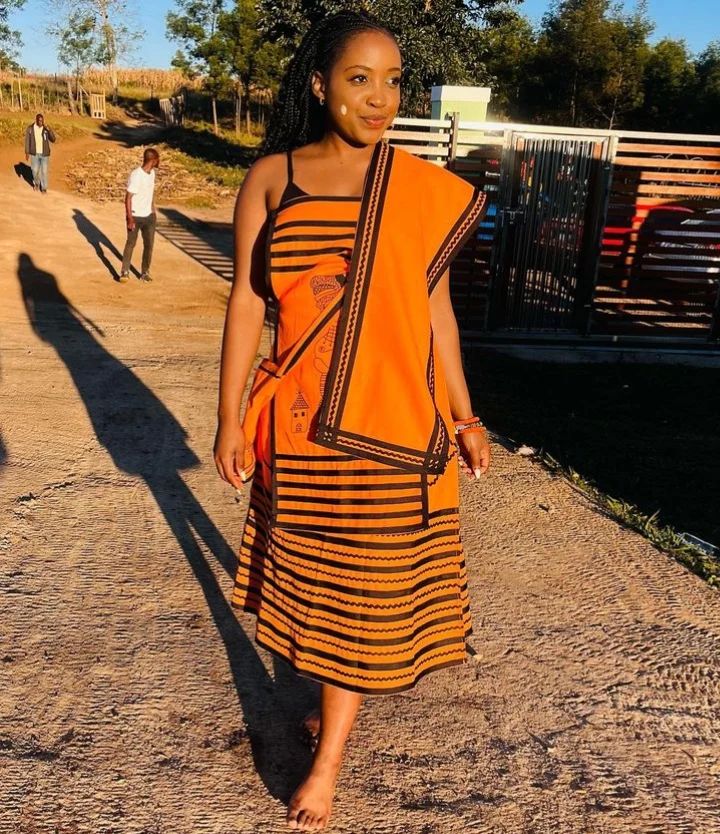
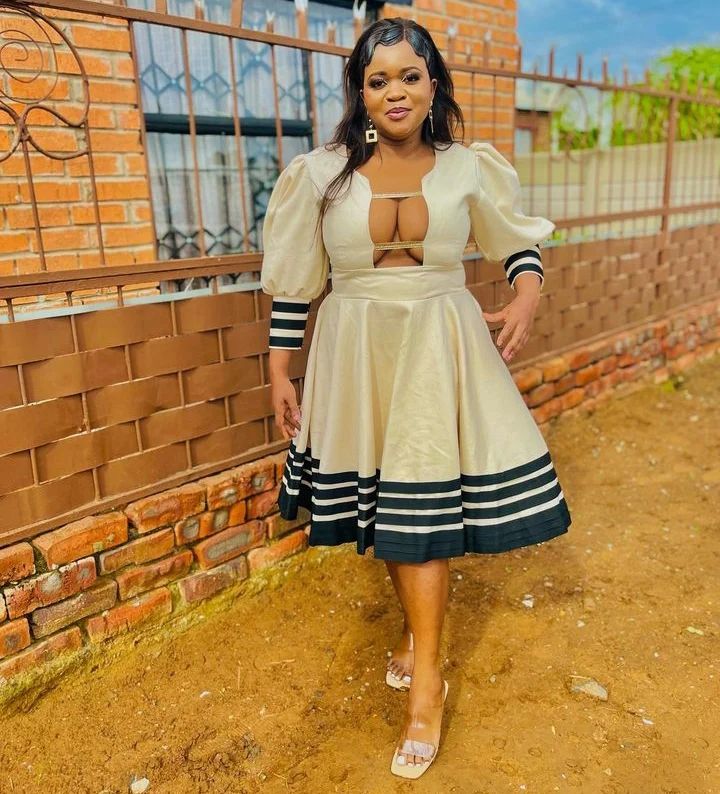
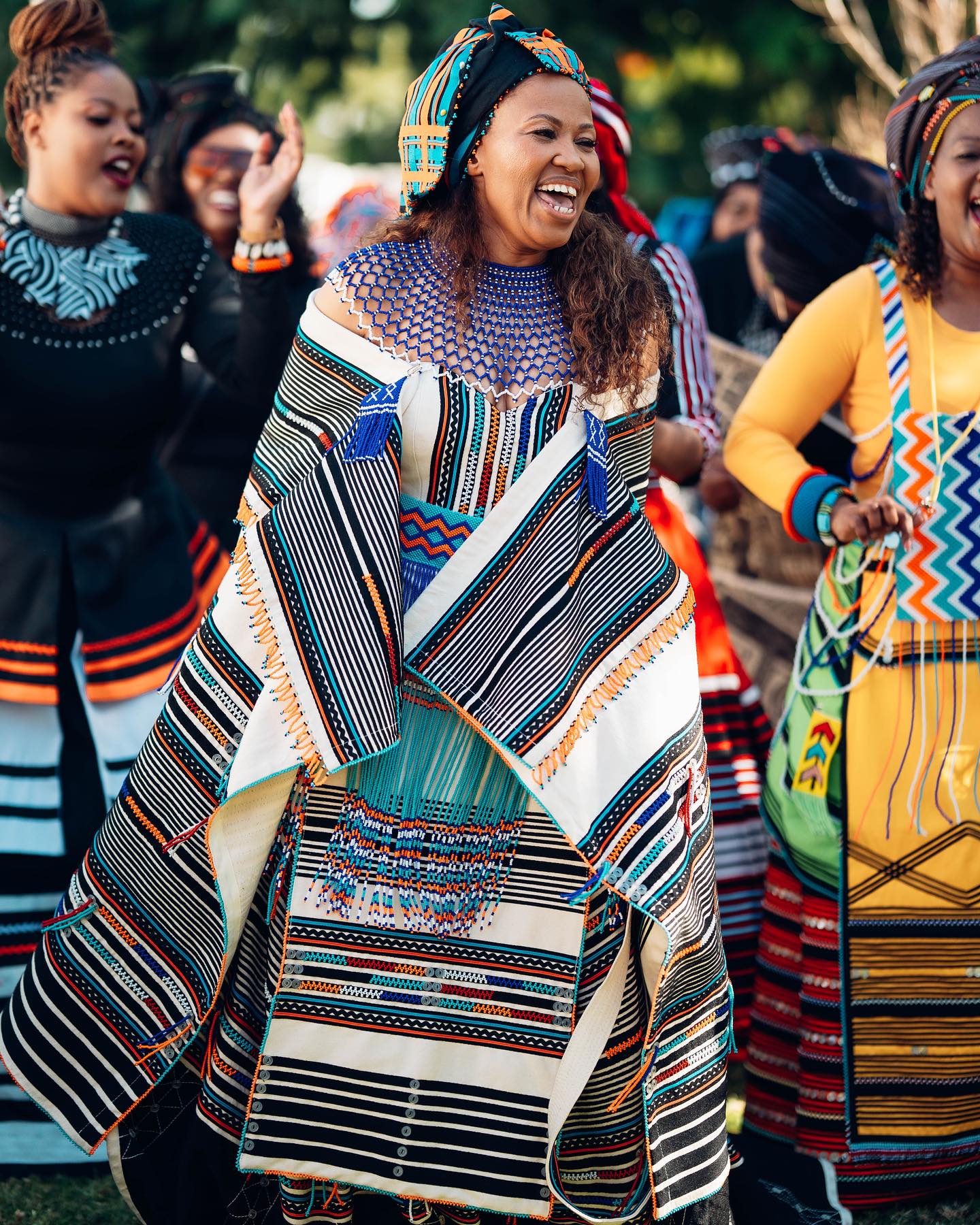
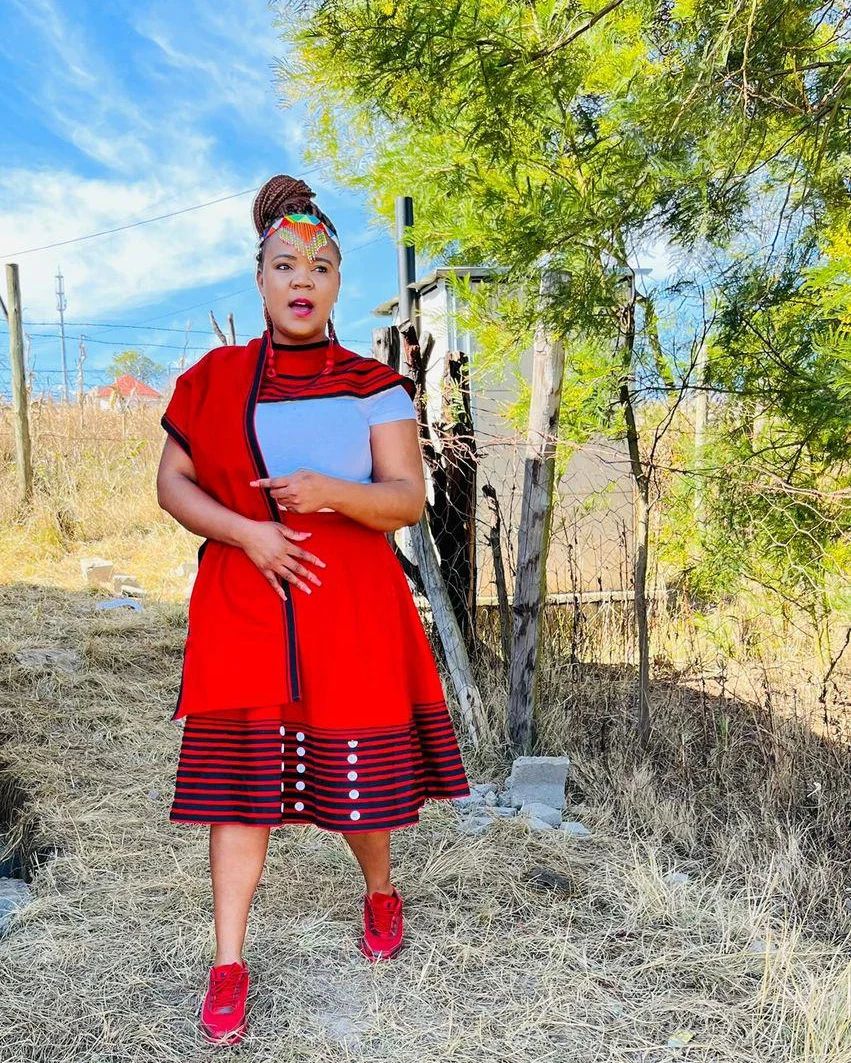
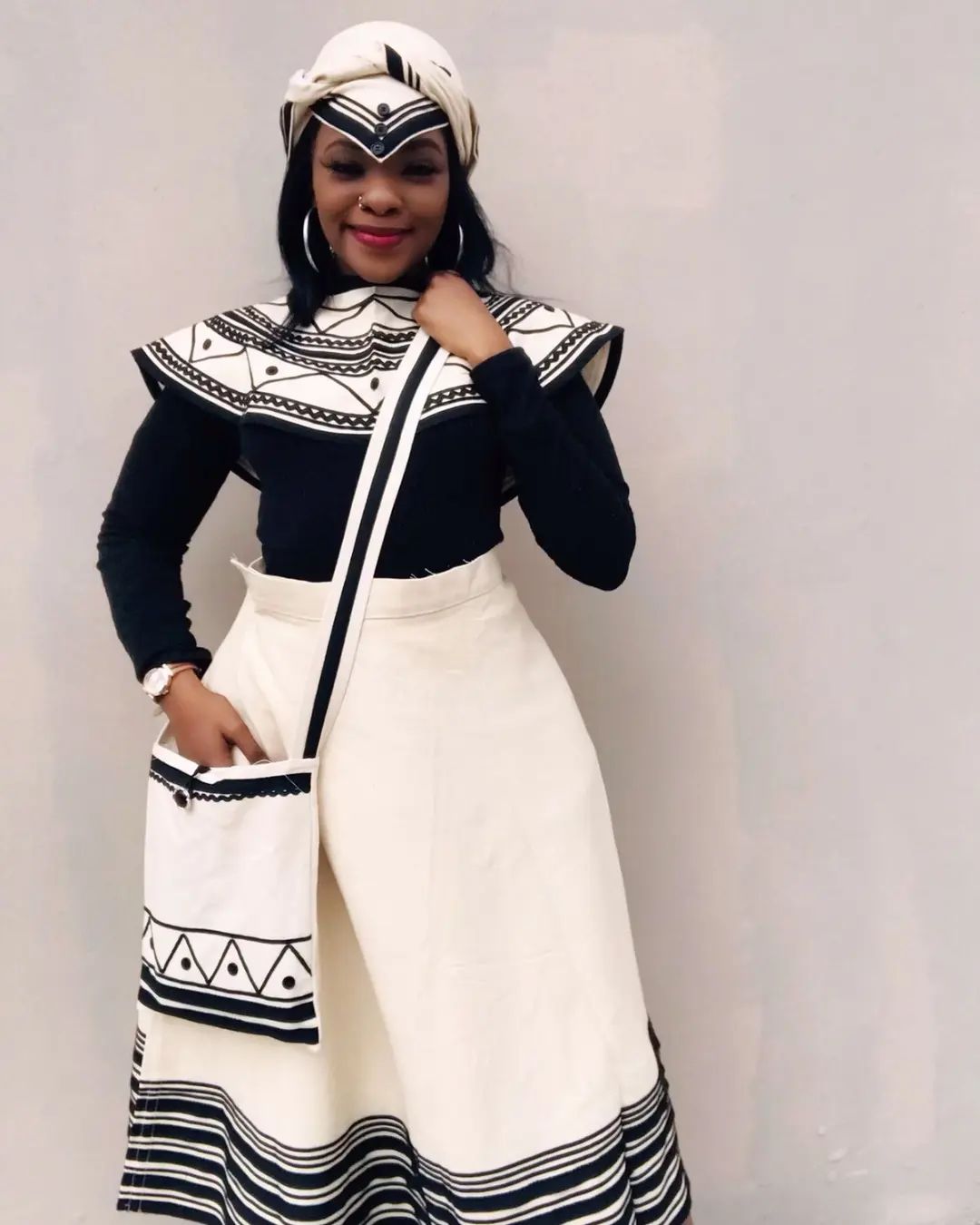
Xhosa Traditional Attire for Women
The Xhosa traditional attire is not only visually stunning but also holds great cultural significance. For Xhosa women, the attire consists of several traditional clothing items, each with its own unique meaning.
Explanation of traditional clothing items for women, including the isidwaba and isicwaya
The isidwaba is a long skirt made from colorful fabrics such as shweshwe or umbhaco. It is worn along with a matching top called an isicwaya, which is usually a short-sleeved blouse. These clothing items are often beautifully adorned with intricate beadwork and embroidery.
The isidwaba symbolizes womanhood and fertility, while the isicwaya represents femininity and cultural pride. Together, they showcase the rich heritage and identity of Xhosa women.
Wearing Xhosa traditional attire is not only a way to celebrate one’s culture but also to honor and preserve the traditions of their ancestors. It serves as a reminder of the strength and resilience of the Xhosa people throughout history.
In modern times, Xhosa traditional attire has gained popularity beyond ceremonial occasions and has become a fashion statement. Many Xhosa women proudly incorporate elements of their traditional attire into their daily outfits, showcasing their cultural heritage with pride.
Whether worn for special occasions or as casual wear, Xhosa traditional attire for women truly captures the beauty and significance of Xhosa culture.
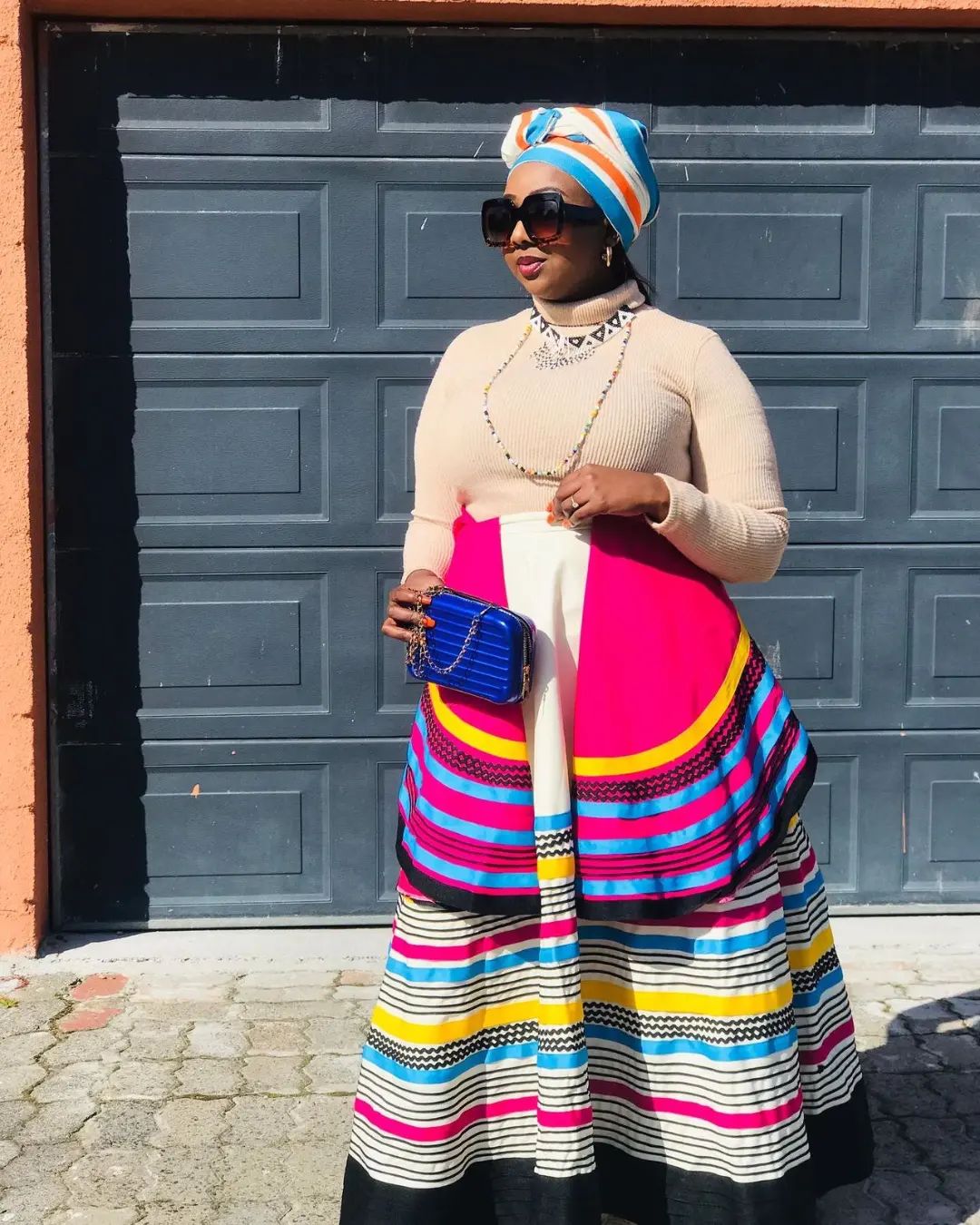
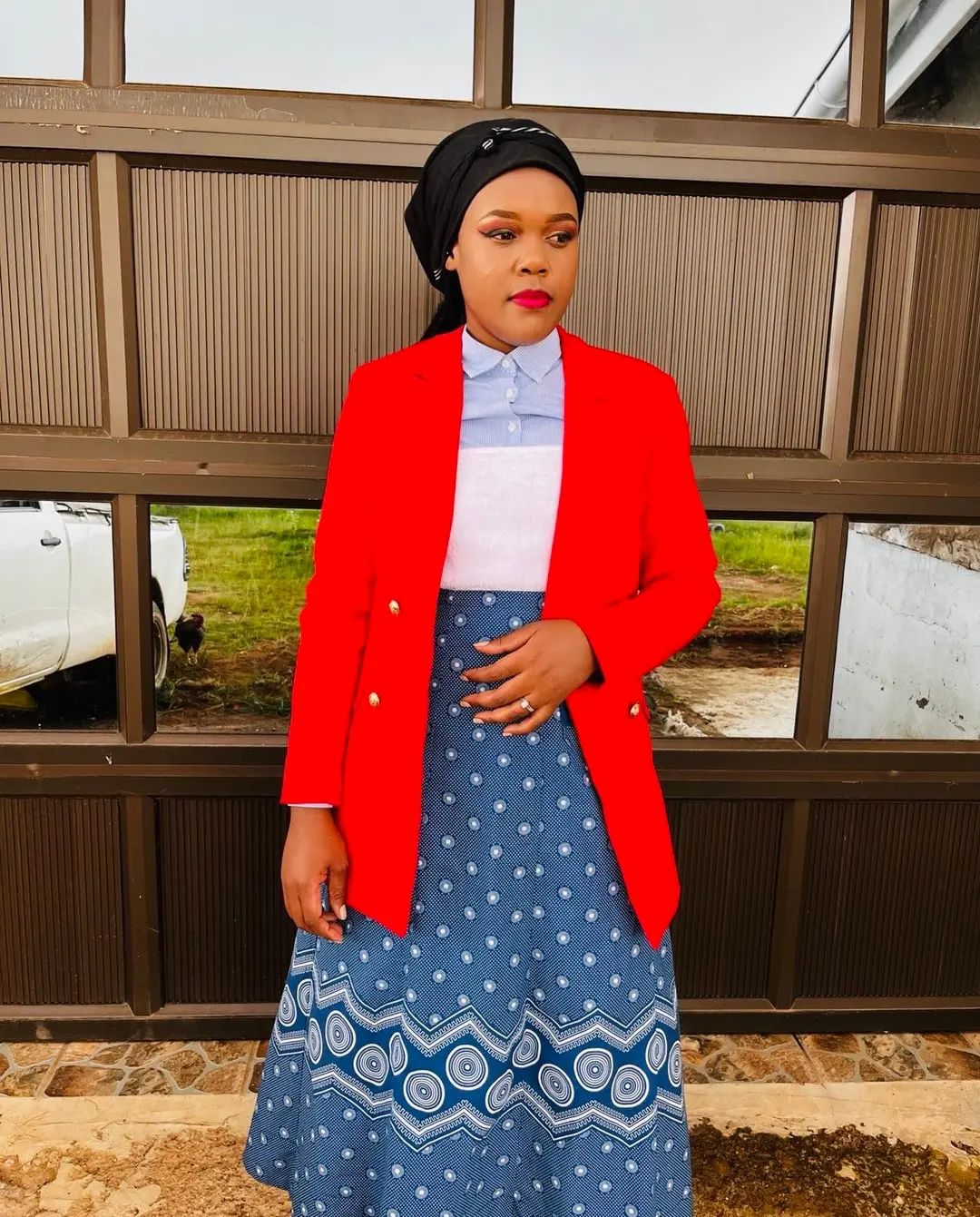
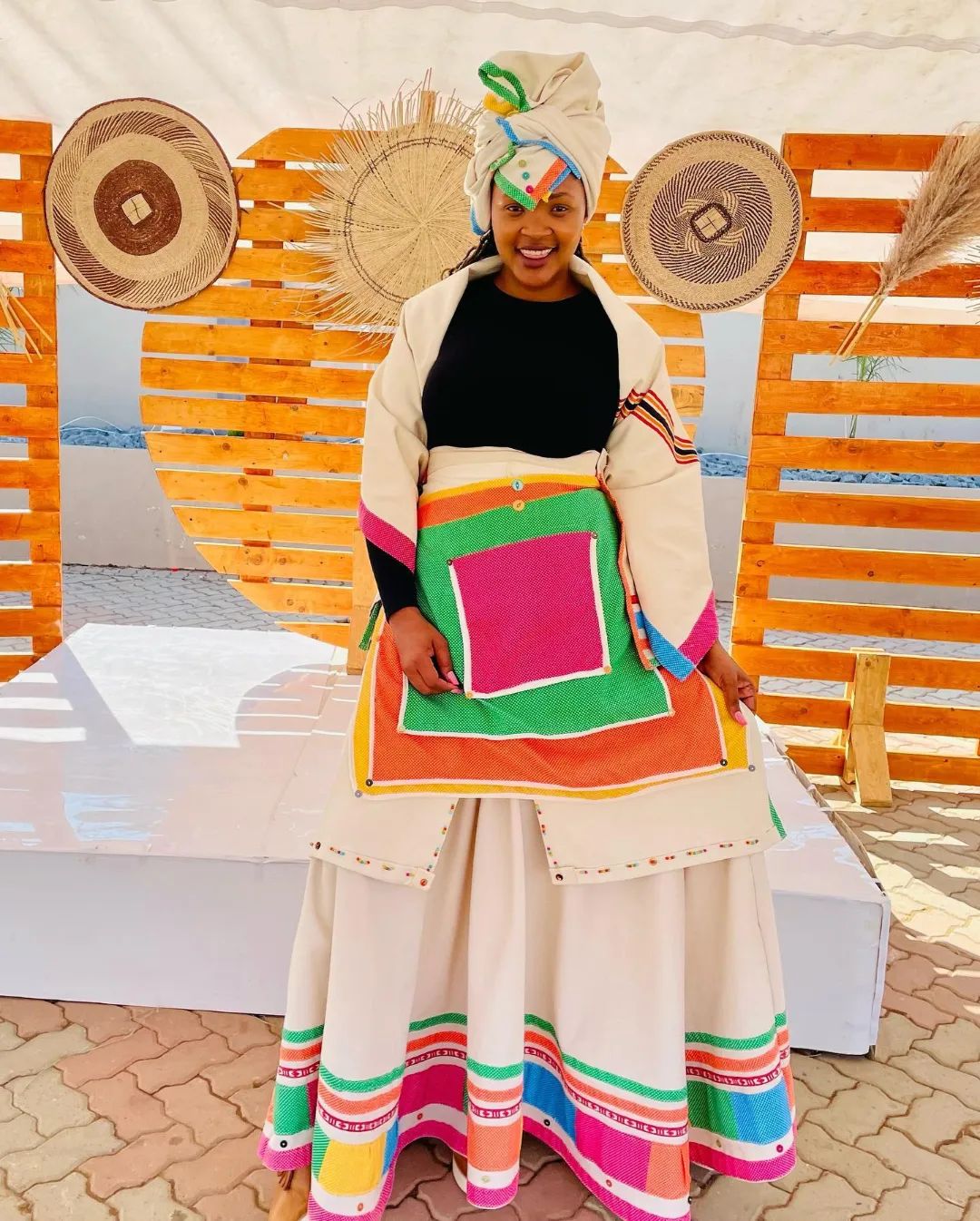
Accessories and Adornments in Xhosa Traditional Attire
Xhosa traditional attire is not just about the clothing itself but also the accessories and adornments that complete the look. From beautiful beads to stylish hats and warm blankets, these elements play a significant role in the overall significance of Xhosa traditional attire.
Significance of accessories like beads, hats, and blankets
1. Beads: Beads are an integral part of Xhosa culture and traditional attire. They are often used to create intricate patterns and designs on clothing, adding color and vibrancy to the outfit. Beads hold symbolic meaning and represent various aspects of Xhosa life, such as marriage, age, and social status.
2. Hats: Hats, known as “ixhegu” in Xhosa language, are commonly worn by both men and women. These hats are not only fashionable but also serve practical purposes, providing protection from the sun or rain. Different styles of hats represent different stages of life or signify specific events or ceremonies.
3. Blankets: Blankets hold deep cultural significance in Xhosa tradition. They are not only used for warmth but also reflect the wearer’s social standing and heritage. Different patterns and colors on the blankets can indicate tribal affiliations or marital status.
The accessories and adornments in Xhosa traditional attire contribute to the beauty and richness of the culture. Each element holds its own significance and tells a story about the wearer’s identity and heritage. Whether it’s the intricate beadwork, stylish hats, or meaningful blankets, these accessories add depth to the overall experience of Xhosa traditional attire.
Modern Influences on Xhosa Traditional Attire
Xhosa traditional attire is not merely a fashion statement; it holds significant cultural and historical value. Over the years, this iconic clothing has evolved to incorporate modern influences while preserving its authenticity. From vibrant colors and intricate beadwork to bold prints and contemporary styles, Xhosa traditional attire continues to captivate people around the world.
Adaptations and contemporary styles in Xhosa clothing
The Xhosa people have embraced various adaptations and contemporary styles in their traditional attire. Many have incorporated Western fashion trends, resulting in a fusion of modern and traditional elements. From stylish jumpsuits and dresses to tailored suits and fashionable head wraps, Xhosa clothing has become a symbol of cultural pride and innovative fashion.
Designers and fashion enthusiasts have also played a significant role in shaping the evolution of Xhosa traditional attire. They continue to showcase the beauty and versatility of these garments through fashion shows, exhibitions, and cultural events, gaining recognition on international platforms.
Today, Xhosa traditional attire not only represents the heritage of the Xhosa people but also serves as a form of self-expression and celebration. Whether worn for special occasions such as weddings or festivals or as everyday wear, these garments provide a visual representation of the rich history, traditions, and values of the Xhosa culture.
In conclusion, Xhosa traditional attire continues to inspire awe and admiration for its beauty and significance. With its blend of past and present influences, it serves as a testament to the resilience of the Xhosa people and their commitment to preserving their cultural identity through clothing.
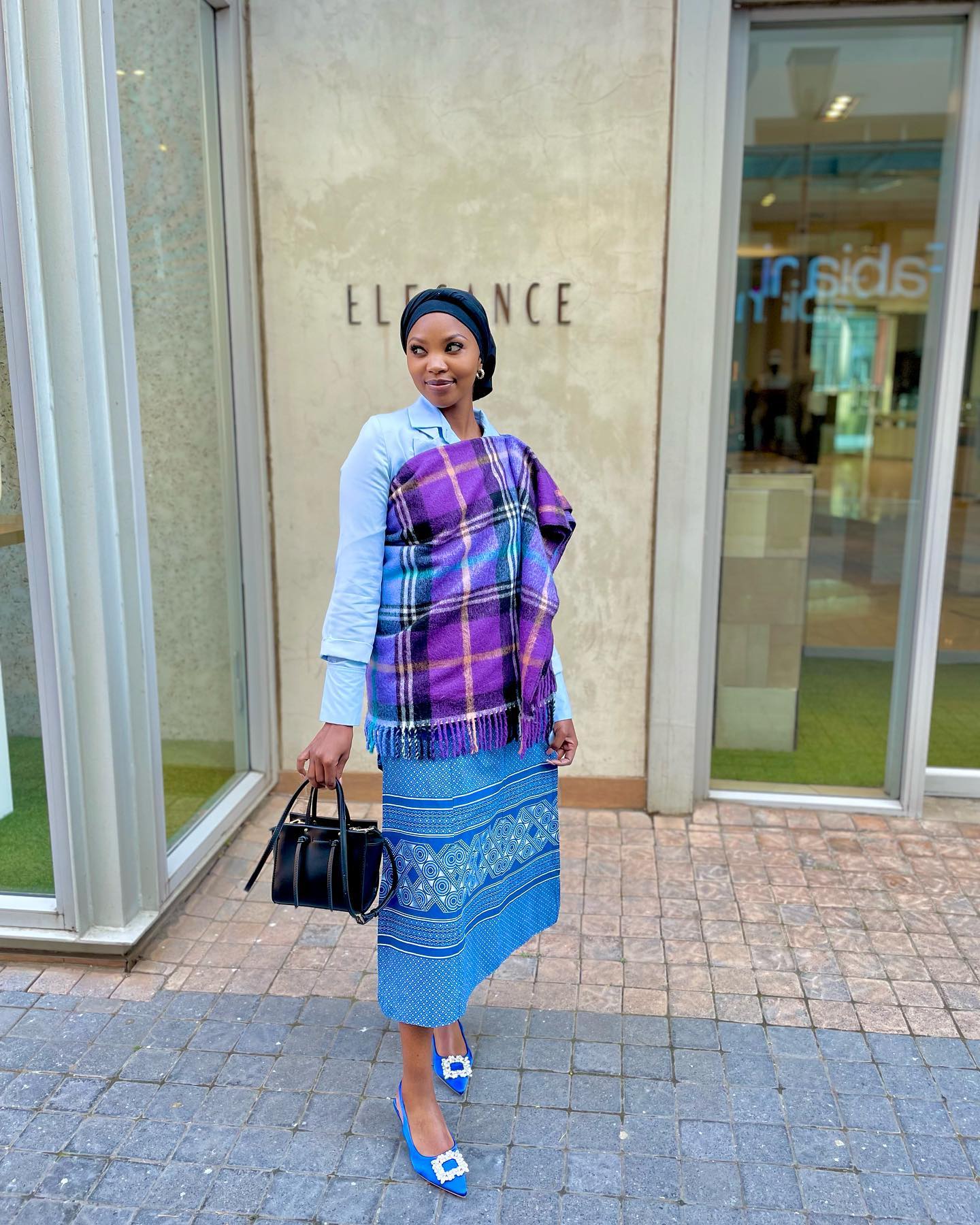
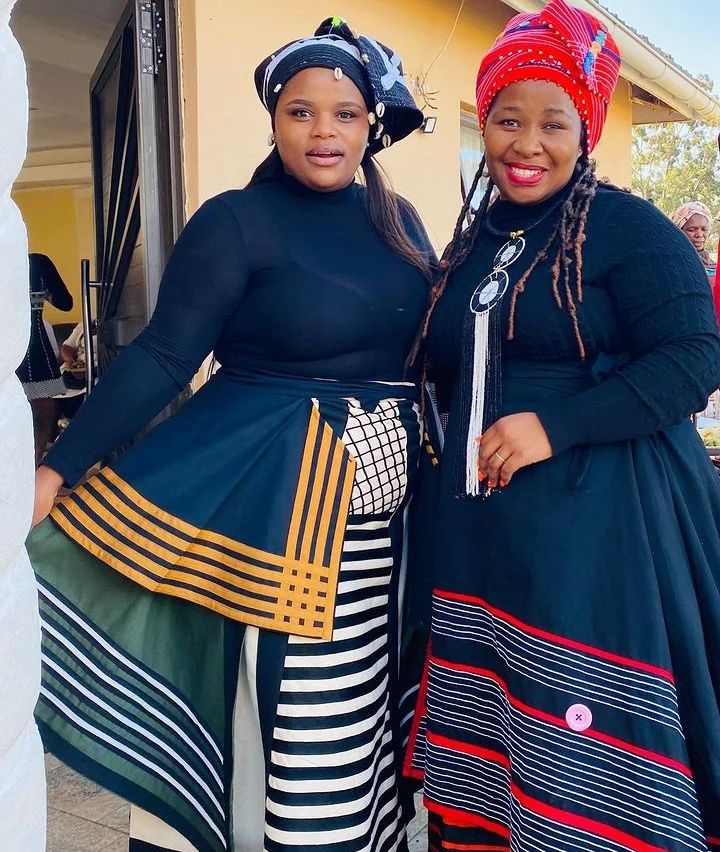
Conclusion
Xhosa traditional attire is not only visually stunning but also holds deep cultural significance. Each element of the attire, from the colorful patterns to the intricate beadwork, tells a story and represents a rich heritage. By exploring and appreciating the beauty of Xhosa traditional attire, we can gain a greater understanding and respect for this vibrant culture.
Appreciating the beauty and cultural significance of Xhosa Traditional Attire
Xhosa traditional attire is not just clothing; it is a powerful expression of culture, identity, and heritage. The vibrant colors, intricate designs, and meticulous craftsmanship make each outfit a work of art. From the striking headpieces to the stylish dresses and accessories, Xhosa traditional attire showcases the unique beauty of this South African culture.
The significance of Xhosa traditional attire goes beyond aesthetics. Each garment has symbolic meanings and represents various stages and milestones in life. For instance, the “umqhele” headpiece worn by married women signifies their marital status and is adorned with special beads that hold spiritual importance.
By embracing and celebrating Xhosa traditional attire, individuals can connect with their roots and preserve their cultural heritage. It serves as a reminder of the resilience and strength of the Xhosa people throughout history.
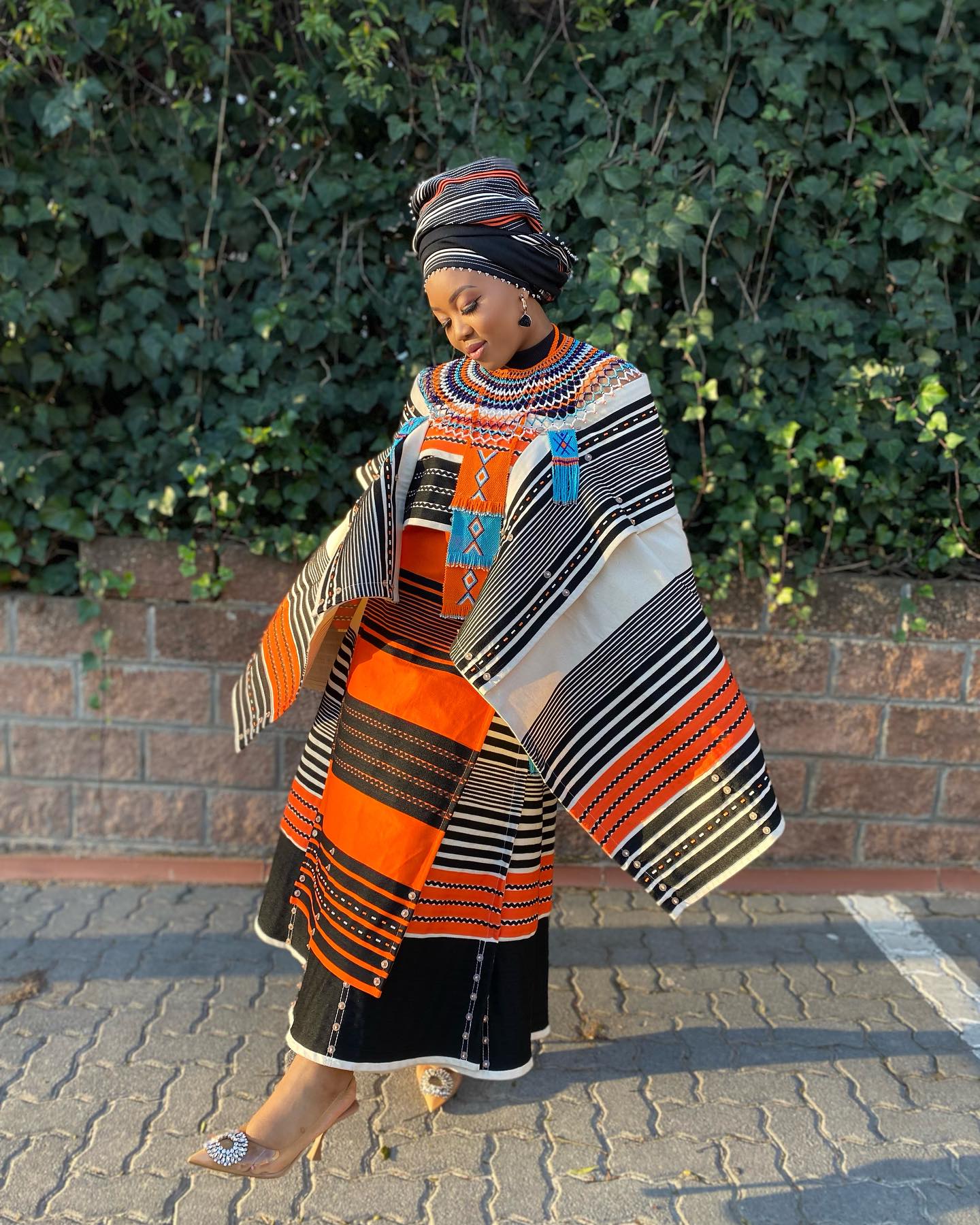
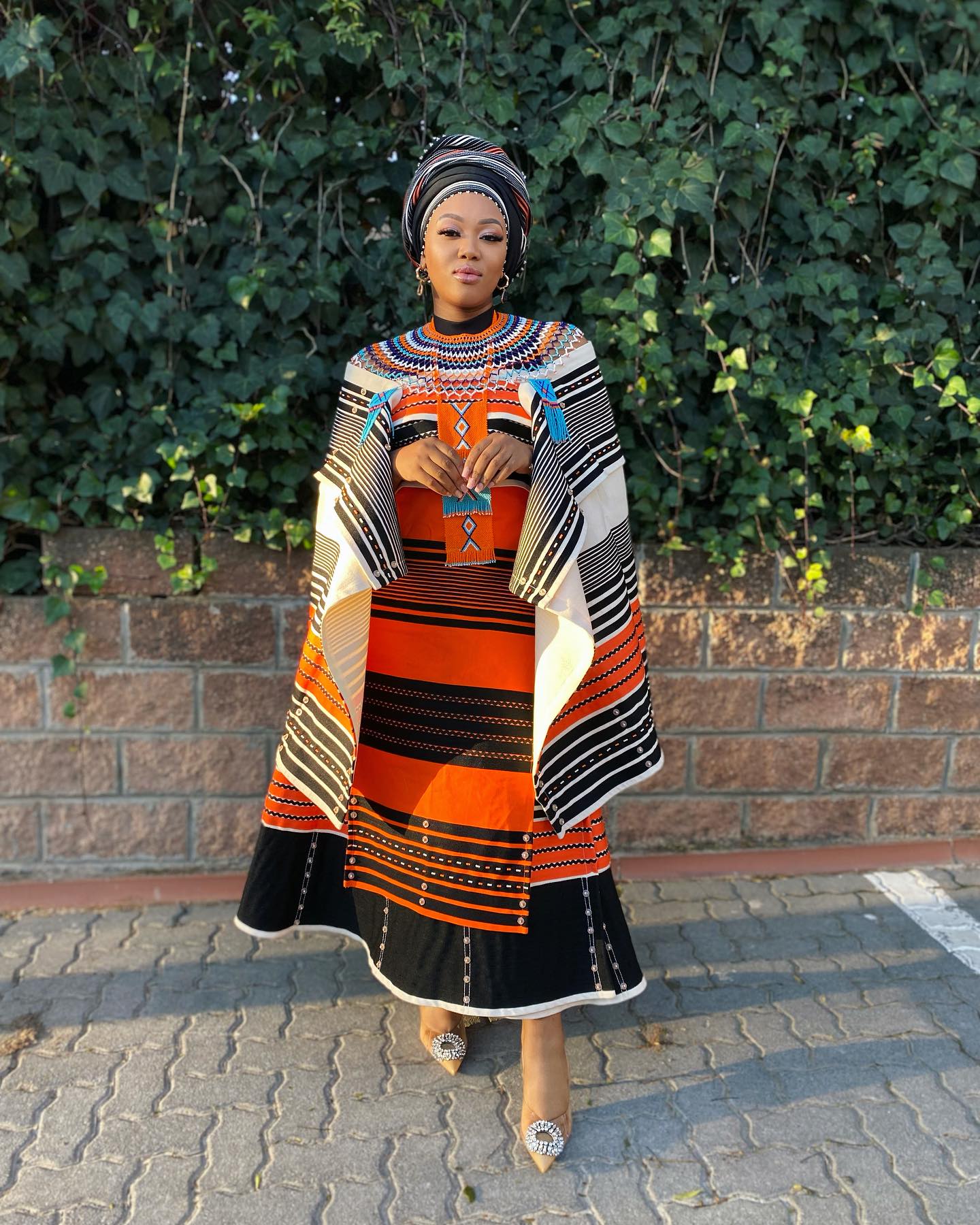
FAQ (Frequently Asked Questions)
Q: Can anyone wear Xhosa traditional attire?
A: Yes, Xhosa traditional attire is not limited to individuals of Xhosa descent. It can be worn by anyone who appreciates and respects the culture.
Q: Where can I buy Xhosa traditional attire?
A: Xhosa traditional attire can be purchased from local South African markets, specialized boutiques, or online stores that specialize in African fashion.
Q: Are there specific occasions when Xhosa traditional attire is worn?A: Yes, Xhosa traditional attire is worn during cultural ceremonies, weddings, festivals, and important social events. It is a way for individuals to express their pride and celebrate their heritage.
Q: Can Xhosa traditional attire be customized?A: Yes, Xhosa traditional attire can be customized to reflect an individual’s personal style or preferences. Tailors and designers can incorporate unique elements while still preserving the essence of the traditional design.
Q: Can Xhosa traditional attire be worn in everyday life?A: While Xhosa traditional attire is often reserved for special occasions, some individuals choose to incorporate elements of it into their everyday wardrobe to celebrate their heritage on a regular basis.
Comments are closed.